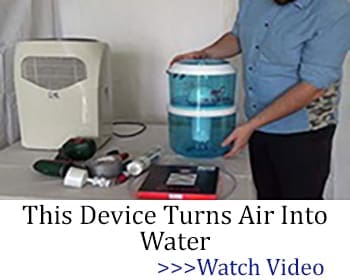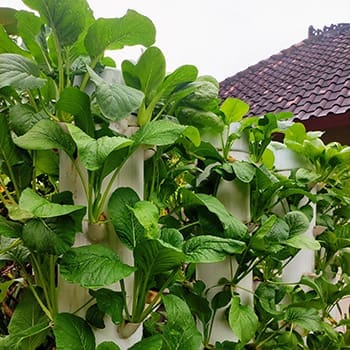Homesteaders are always looking for innovative agricultural practices to maximize productivity at the same time as minimize resource consumption. One way to achieve this is through a process called aeroponics; this advanced cultivation technique has several benefits and it’s something homesteaders should be looking into. In this article, we will explore the world of aeroponics, its advantages, and how homesteaders can implement it as a part of their gardening strategy.
What Is Aeroponics
Aeroponics is a cultivation technique involving growing plants with their roots suspended in the air. No soil is required, but the plants must be watered and fed often so that they can receive the nutrients required to grow. Additionally, the plants must be kept in a highly oxygenated environment for optimal growth.
The Advantages Of Aeroponics
There are several advantages associated with aeroponics, here are some of them:
Water Conservation: Water scarcity is a global concern. Aeroponics addresses this challenge by using 95% less water compared to traditional soil-based farming. The closed-loop system in aeroponics reduces water waste because the excess nutrient solution can be recirculated, minimizing the need for continuous irrigation.
Nutrient Optimization: Plants receive a highly oxygenated nutrient solution directly to their roots which ensure all nutrients are properly absorbed. In this way, plants grow faster, produce higher yields and are guaranteed to be of a higher quality.
Disease and Pest Management: Because aeroponics doesn’t require soil, it reduces the risk of diseases and pests. Additionally, no soil equals no pesticides, making aeroponic produce healthier and safer for consumption.
Space Efficiency: For homesteaders who don’t have much land, you’ll save plenty of space with aeroponics. Vertical aeroponic systems allow you to stack your plants in columns or tiers enabling you to grow multiple layers of crops. The vertical aeroponic system helps increase productivity per square foot of land.
How To Get Started With Aeroponics
As with anything worthwhile, getting aeroponics set up on your homestead is going to take a lot of careful planning, time, and hard work. However, your labor will not be in vain because once you get a system going and start reaping the rewards, it will drastically improve your homesteading experience. Here are some tips on how to get started with aeroponics.
Research and Planning
This article has given you a brief introduction to aeroponics; therefore, before getting started, you’ll need to do some additional research. Once you’ve found out all you need to know, it’s time to start planning. Here are some things to consider during this stage:
- Learn From Others: The quickest way to get started is to learn from others. Do you know any homesteader’s gardeners, or farmers who are into aeroponics? If so, speak to them about it and find out what works for them, and what doesn’t.
- Budget: Despite the benefits, aeroponics costs money. There are many costs involved including infrastructure, equipment, supplies, and ongoing maintenance. Develop a realistic budget and financial plan that considers both the initial setup expenses and ongoing operational costs.
- Implementation Timeline: Again, although your situation is unique, you can find out approximately how long it takes to implement an aeroponics system by talking to people who already have one running. Nevertheless, there are several stages you will need to consider including the time it takes for setup until the first harvest, system installation, crop establishment, monitoring, and adjustments.
Infrastructure Setup
Creating the right infrastructure will provide a solid foundation for the success of your aeroponics venture. Here are some of the things you’ll need to take into consideration:
- Space Assessment: Evaluate how much space you have available for the aeroponic system. Measure everything and decide whether you’ll be setting up the system inside or outside. Consider things like protection from extreme weather conditions, accessibility, and sunlight exposure.
- Growing Containers: Select the right containers to hold the plants and support the root structures. You can use containers such as net pots, baskets, or aeroponic cups.
- Vertical Towers or Racks: If you want to maximize the space that you have, you’ll want to use horizontal racks or vertical aeroponic towers. Make sure the towers or racks are sturdy, stable, and can support the weight of the plants and nutrient solution.
Nutrient Management
Although you’re used to watering and feeding your plants, the aeroponics system is different and you’ll need to consider several factors including the following:
- Nutrient Requirements: Understand the nutrient requirements of your chosen crops at different growth stages. Different plants have varying nutrient demands during vegetative growth, flowering, and fruiting. Research the specific nutrient requirements for each crop and adjust the solution accordingly to meet their needs.
- pH and EC Monitoring: Regularly monitor the pH (acidity or alkalinity) and EC (electrical conductivity) of the nutrient solution.
- Nutrient Solutions: Invest in high-quality nutrient solutions designed for aeroponic cultivation. These solutions contain a balanced blend of essential macro and micronutrients required by plants.
Lighting and Environment
Lighting plays an important role in the success of aeroponics cultivation, especially if you’re growing your plants inside or in a low-light environment. Here are some of the things you’ll need to consider:
- Light Spectrum: Different wavelengths of light influence plant growth and development in specific ways. The red and blue regions of the spectrum are important for promoting photosynthesis, while green is less important. Choosing the correct light spectrum based on the plant’s growth stage can enhance processes such as flowering or fruiting.
- Supplementing Light: During cold seasons or if you plan on growing your plants in areas where there is limited natural sunlight, supplemental lighting becomes essential for year-round cultivation.
- Light Duration: Most crops need a balance between light and darkness for proper growth and rest periods. Typically, vegetative growth stages require longer lighting periods (16-18 hours). Flowering or fruiting stages generally need 14-16 hours of light exposure.
Final Thoughts
As you’ve read, aeroponics allows homesteaders to transform their gardening practices and reap the benefits of a highly efficient and sustainable cultivation method. With careful planning, dedication to nutrient management, proper lighting, and environmental control, homesteaders can achieve abundant harvests and year-round cultivation. Take full advantage of this innovative system if you want to take your homesteading experience to the next level.
You may also like:
Strange Gardening Tips And Tricks That Really Work
How To Store Food Without Electricity That Can Last Up To A Year (Video)
100-Year-Old Way To Filter Rainwater In A Barrel









